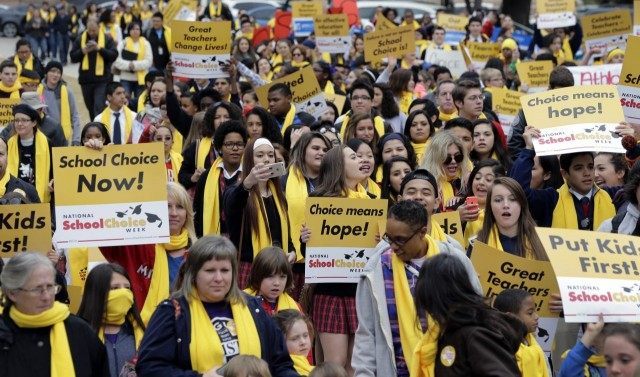Editor’s Note: This Op-Ed was submitted to Breitbart Texas by the Texas Public Policy Foundation and was written by Michael Barba and Nathanael Scherer.
When progressive U.S. Supreme Court Justice Louis Brandeis gave his now famous dissent in the landmark case New State Ice v Liebmann, he wrote, “It is one of the happy incidents of the federal system that a single courageous State may, if its citizens choose, serve as a laboratory; and try novel social and economic experiments without risk to the rest of the country.”
Possessing skepticism towards what politics could realistically achieve, our founding fathers saw the benefit of the rule of law. But such rule would be hard to accomplish. “In framing a government which is to be administered by men over men,” wrote Publius, “the great difficulty lies in this: you must first enable the government to control the governed; and in the next place oblige it to control itself.”
One way America achieved this is through a system of checks and balances—between the national branches and between the national government and state governments. The latter check is exemplified in the Tenth Amendment.
While federalism primarily serves as a means of restraining government, Brandeis was right about federalism’s happy accident: good innovations could be tested by the American people. Every power not given to the national government by the Constitution would be a testing ground for state law. In this sense, the American system of government would be bottom-up rather than top-down. It would promote diversity and creativity, rather than cohesion and uniformity.
This is especially true of education.
The U.S. Supreme Court once declared, “Education, of course, is not among the rights afforded explicit protection under our Federal Constitution. Nor do we find any basis for saying it is implicitly so protected.”
Americans have strong feelings about this issue. They want the freedom to choose where they send their children to school, just as they have the freedom in many other parts of their life. These feelings are exemplified in a recent survey, which found that 70 percent of Americans support school choice.
At present, 26 states, the District of Columbia, and Douglas County, CO, offer private school choice. And the number is growing fast. Just this year, Nevada established the nation’s first universal school choice program.
For many Americans, a person’s geographical location often determines the type of school they will attend. According to the National Center of Education Statistics, 73% of children attended their assigned public school, down from 80% in 1993. This should be encouraging to those who believe in equality of opportunity, and it’s especially encouraging to parents. As one Nevada mother wrote, “For me, using an education savings account isn’t a form of protest or an act of defiance against the school system. It’s a chance to give Nathan a better future.”
Still, parents are playing the hand they’re dealt. According to the U.S. Department of Education, 1 in 3 families moved to their neighborhood because of the school their children would be assigned to. But among the poor and near-poor, the DOE found that only 1 in 5 made such a move.
If we want equality of opportunity, every child needs to have access to a great education. Parents deserve the right to choose—regardless of income—which school best suits their children’s needs. No one questions the states’ role in providing the funds to support the “general diffusion of knowledge” among the people. However, allocating funds for education is entirely different than administering schools themselves.
A federal system takes into account the many historical differences that exist between different parts of the country. It allows freedom of choice to parents and competition among schools. The success of school choice in states would be a sign that both public education and our federal system are healthy and improving.
Michael Barba is a policy analyst with the Center for Education Freedom at the Texas Public Policy Foundation.
Nathanael Scherer is an intern with the Center for Education Freedom at the Texas Public Policy Foundation.

COMMENTS
Please let us know if you're having issues with commenting.